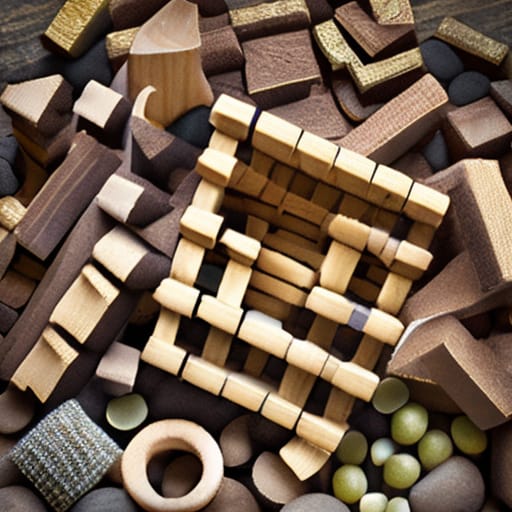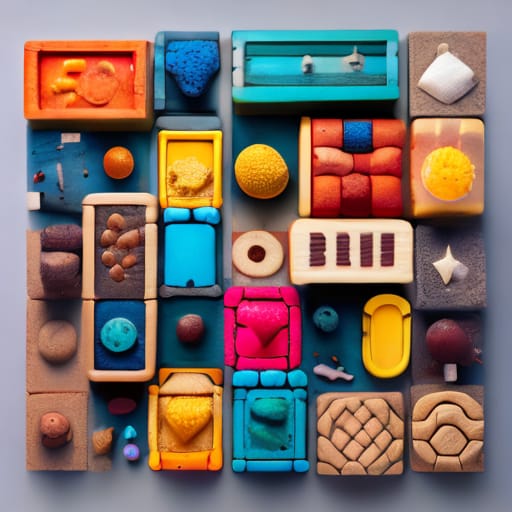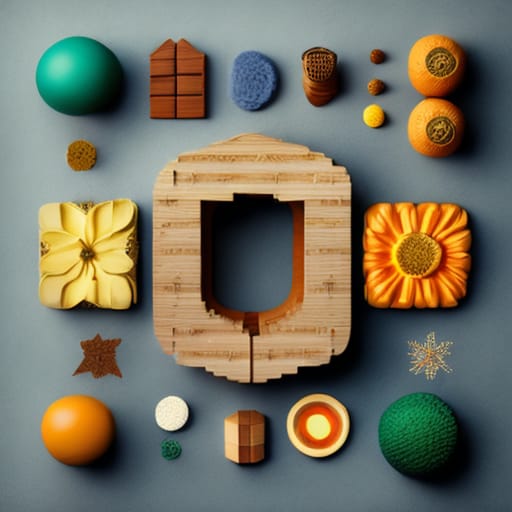Extra large wooden building blocks are oversized, wooden versions of classic building blocks that provide endless opportunities for creativity, learning, and skill development. With sizes ranging from large blocks the scale of cinder blocks to giant jumbo blocks kids can climb on, these toys build more than just towers. Let’s explore why big wooden blocks should be part of every child’s toy collection.
What Are Extra Large Building Blocks?
Extra large building blocks or oversized building blocks are versions of classic wooden unit blocks sized up to jumbo proportions. They are significantly larger than traditional small wooden blocks or Lego, with pieces measuring from 4 inches up to a giant 12+ inches in size.
Extra large building blocks allow children to build on a grander scale, creating larger structures like houses, tunnels, robots, and more. They come in standard geometric shapes like rectangles, arches, cylinders, and triangles as well as special novelty shapes.
Sets are often made of durable solid wood like pine, though some feature lightweight plastic or foam. The best blocks combine fun colors and patterns with smoothed, sanded edges and corners for safety.
Benefits of Oversized Building Blocks
Extra large building blocks offer many developmental and educational benefits:
- Promote creativity & imagination – Bigger blocks mean bigger builds like castles, barns, spaceships, and more to spark creative play.
- Enhance motor skills – Maneuvering and stacking larger, heavier blocks builds strength and coordination.
- Develop spatial skills – Identifying shapes and how they fit together trains spatial reasoning.
- Teach STEM concepts – Exploring principles like balance, structure, and geometry lays foundations for STEM subjects.
- Improve social skills – Collaborative building encourages sharing, compromise, and communication.
- Support special needs – Gentle textures and large pieces can help special needs children develop skills.
Beyond academic perks, oversized building blocks are simply fun to play with!
Types of Extra Large Building Blocks
Several main categories of extra-large building blocks exist:
Plastic Hollow Blocks
- Lightweight hollow plastic blocks
- Often feature indented patterns or gently curved edges
- Range from 4 to 6 inches tall typically
Solid Wooden Unit Blocks
- Traditional wooden unit blocks scaled up in size
- Tend to use pine, birch, beech, maple and other hardwoods
- Range from 4 inches to over 12 inches tall
Foam Jumbo Blocks
- Crafted from soft, lightweight EVA foam
- Gentle on hands and floors if toppled
- Often feature bright colors and alphabet letters
- Range from 5 to 8 inches tall typically
Specialty Big Blocks
- Take on unique sizes, shapes, and building functions
- Include oversized versions of games like Jenga, animal shapes, bricks, and more
- Range from small palm-sized to over 3 feet long

Top Extra Large Building Block Recommendations
With so many mega block sets available, here are my top recommendations after lots of family play testing:
| Product | Details | Rating | Price |
|---|---|---|---|
| Melissa & Doug Jumbo Knob Building Blocks | 24 pine blocks with chunky handles, smooth sanded | ***** | $$ |
| Gorilla Playsets Jumbo Building Blocks | 95 colorful, durable plastic blocks with storage case | **** | $$$ |
| Schylling Color Building Block Set | 50 solid smooth pine blocks in vivid colors | *** | $ |
I recommend the Melissa and Doug Jumbo Knob blocks as a top pick for smaller budgets. The chunky handles make them super easy for small hands to grasp, and they have held up well. For a larger but pricier set that ticked all our wish list boxes, the storage-friendly Gorilla Playsets 95-piece set is truly drool-worthy.
Now let’s explore how to shop for, safely use, and creatively play with oversized building blocks with your kids.
Shopping for Large Wooden Blocks
Key features to look for when choosing extra large building block sets:
- Materials – Look for solid wood, durable plastics, or EVA foam blocks that feel hardy. Avoid thin plywood or particleboard options prone to splintering.
- Smooth edges & corners – Ensure all edges and corners are sanded smooth to prevent cuts, splinters or poked fingers during enthusiastic tower-toppling!
- Varied shapes & sizes – A diversity of geometric shapes, arch blocks, cylinders etc creates more build possibilities.
- Good weight – Pieces should be heavy enough not to easily topple but not unwieldy to lift and stack. Hollow plastic or foam blocks are very lightweight.
- Easy-grasp features – Handles, knobs, curves and indentations make picking up and placing blocks simpler for small hands.
- Number of pieces – Bigger sets mean more creative options but can get pricey. I recommend a minimum of 20 pieces, but 50 to 100 pieces is ideal.
- Safety seals – Top brands clearly mark materials and safety testing info. Look for ASTM F963 certification or CE marks showing stringent safety standard testing.
- Bonus elements – Some sets include activity guide books, storage bins, stacking mats or toys like cars and signs that further extend play.
Pay close attention to assembly requirements too (most simple block sets don’t require any). And don’t shy away from shopping secondhand for quality wooden block deals!
Establishing a Safe Building Block Play Area
Those towering block creations may come crashing down, so setup a safe play zone using these tips:
Choose a Good Surface
Stack blocks on a flat, stable surface that will minimize injury and noise if toppled. Thick rugs over wood or tile floors provide padding without too much sliding. Avoid slick floors or surfaces baby could fall off of.
Clear Space
Give lots of room to build free-standing structures without things getting knocked over. At least 6 x 6 feet is ideal for most extra large block sets. Tidy away nearby delicate items and watch for toddler toes!
Incorporate Block Play into Daily Routines
Set aside regular block play periods so kids know when they can build to their heart’s content without interrupting household flow. After dinner before bedtime bath works well so kids burn energy while parents tidy up.
Safe Block Play Guidelines
While oversized building blocks pose less choking hazards than small sets, teach kids good block play safety:
- No throwing blocks – they could damage objects or injure others
- No standing or climbing on stacked blocks – prevent dangerous falls
- Don’t build alone – have an adult supervise for safety and fun teaching moments
- Follow age range labels to match sets with developmental stage
- Watch out for tiredness – put blocks away once play gets too boisterous
Reinforcing safe habits ensures enjoyable block construction for all!
Maximizing Child Development Value
Beyond being fun, oversized building blocks offer many developmental perks when play is guided effectively. Here are tips to engage learning:
Cognitive Skills
- Have kids describe shapes, colors and features of different blocks
- Guide counting pieces and understanding quantity concepts
- Ask questions during play that encourage problem-solving
Motor Skills
- Let toddlers grasp and manipulate pieces with minimal help to build hand strength
- Stacking and lifting block structures builds overall body coordination
- As structures get more complex, balance and controlled movement is challenged
Creativity & Imagination
- Inspire storytelling by asking kids about their wooden block creations
- Suggest new ideas and shapes to expand thinking: What about a turtle? How could we build a bridge?
- Introduce theme days like Construction Day, Zoo Day or Space Day
Mixing free play with guided play provides a winning balance that keeps kids interested and developing new skills!

Top 5 Big Wooden Block Play Activity Ideas
Beyond basic stacking fun, extra large building blocks offer endless play possibilities. Here are top creative ideas to try:
- Block zoo or farm – Use a mix of blocks to form enclosures and buildings for animal figurines. Tell stories about the creatures!
- Car tracks or roads – Craft winding lanes with ramps for toy cars to race down. Time the cars for added math fun.
- Fairy tale castle – Let imaginations run wild constructing a magical fortress with towers, gates, and secret rooms inside.
- Cityscape – Craft skyscrapers, construction zones, parks and other structures to model a bustling metropolis. Add toy residents for fun.
- Space station – Incorporate a cardboard box “spaceship” that connects to triangular “rocket” and arch “satellite” pieces floating through space!
Add some toy vehicles, signs, figurines and other accessories to further build out your block world creations. Snap some pics to capture the magic too!
Maintaining and Storing Blocks
A few basics keep oversized building block toys looking and performing their best for years:
- Wipe wood blocks with a damp cloth and mild soap/detergent using a gentle circular motion. Towel dry fully.
- Store blocks in a bin, box or fabric bag with handles for easy transport to play zones. Some sets provide storage.
- Check edges and joints periodically for splintering damage. Lightly sand down or use protective lacquer if an issue emerges.
- Consider periodically treating unvarnished wood blocks with food-grade wax or mineral oil to nourish the wood.
- If pieces get lost, contact the manufacturer to find or specially order replacements.
Proper maintenance means fewer replacement costs and blocks passed through generations!
Key Takeaways on Oversized Building Blocks
- Extra large building blocks ranging from 4 to over 12 inches promote imaginative, screen-free play.
- Chunky blocks build fine and gross motor skills and teach STEM concepts through hands-on play.
- Look for durable solid wood, plastic or foam pieces sized for small hands with safety-first rounded edges.
- Establish a safe designated building area and supervise play while giving freedom to create.
- Combine structured activities with free building time to maximize learning and developmental gains.
- Proper storage and occasional maintenance keeps large blocks looking great for years.
Giving kids the chance to think big with oversized building blocks builds creativity and skills by leaps and bounds. With so many sets available, you’re sure to find an extra large option perfect for your family’s needs and budget. Just watch out parents…you may get hooked stacking yourself!
Frequently Asked Questions
Still have some questions about extra large building blocks? Here are answers to commonly asked questions.
Why are bigger wood blocks better for toddlers?
Oversized blocks are easier for small hands to grasp and manipulate, promoting motor skills development. Their larger size and weight builds hand and arm strength better than tiny blocks requiring fine pincer grasps. Big chunks also mean there is less of a choking hazard.
What safety certifications should I look for?
Top extra large wooden building blocks aimed at preschoolers should meet toy safety standards like ASTM F963 or EN 71 indicating third-party testing for hazards. Approved brands also often feature CE marks noting European standards compliance too.
How do I know if blocks contain harmful chemicals?
Reputable manufacturers of quality educational blocks avoid dangerous materials like BPA plastics, lead and phthalates. However, cheap blocks produced overseas could contain toxins, so stick to major domestic or European brands that state their strict testing policies. Some advertising “non-toxic” or “food-safe” finishes. When unsure, contact the maker.
What’s the best way to clean large wood blocks?
Keep your investment in quality toys looking like new by regularly wiping pieces with a damp, mild soapy cloth, taking care not to submerge wooden blocks. Towel dry completely. Occasionally reseal unvarnished blocks with food-grade wax or mineral oil. Disinfect plastic blocks periodically with diluted bleach/water mix before triple rinsing.
Should I separate baby blocks from sets for older kids?
It’s smart to divide blocks by suggested age range, especially if younger kids or toddlers may sneakily access tiny pieces. Most manufacturers mark recommendations for safety and size appropriateness. Keep complicated builds with small parts away from toddlers and preschoolers who remain at greater choking risk and need bigger pieces.
Can I make homemade mega blocks?
Yes! Many parents DIY oversized building blocks on the cheap using supplies like wood slices or polyethylene foam swimming noodles cut into big chunks. However, take lots of precautions around sharp edges, weight, stability and potential toppling hazards. You won’t have the quality controls of commercial products either.
What should I look for in wooden blocks for 1 year old?
Focus on a small starter set of around a dozen oversized blocks for toddlers with absolutely no sharp points or edges and chunky, easy-to-grasp handles. Seek lightweight, BPA-free blocks around 5 inches tall made of smooth beech or maple wood marked as non-toxic. At 12 months, kids need almost no assembly and just want to hold, mouth, drop and bang those big blocks!
